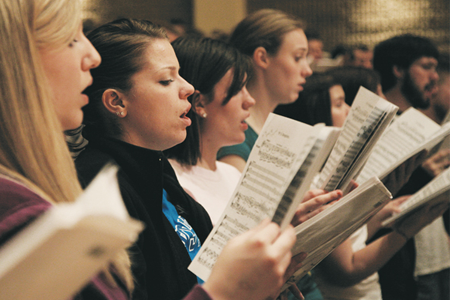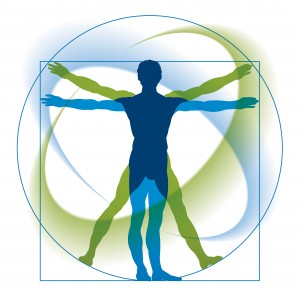Regardless of your tenure in the world of student choir, I think we would all agree that understanding the adolescent and the culture in which s/he lives can be quite a challenge—especially the 21st century American culture. Perhaps we would do well to take some time and really delve into the life and mind of the adolescent so that we can better understand factors that are work in our student choir ministries. For example, notice the thoughts at work in this 8th grader:
Playing in the ocean,
Without a worry or a care.
Little do you realize
That life won’t treat you fair.
You don’t have to worry,
About girls, school, and death.
Or that those things make your heart ache,
With every little breath.
You don’t think about your mother.
For she’ll always be there.
And if she were ever gone,
That would be quite a scare.
So, keep playing, little me,
Keep on having fun.
Because once you get to my age,
From life, you’ll want to run.
By William Ayer, 8th grade*
*from Classroom Connections, by Susan Hinebauch
This kind of mental state is sitting in your choir rehearsal every week. In this multi-part series we’re going to take a crash course in adolescent development and those processes that influence the type of thinking in William’s poem. We want to look underneath the surface to see what is really going on in the minds, souls, and lives of our student singers. I know that phrase “adolescent development” might sound boring to some or even scary to others, but in many ways it is a journey into the unknown; anyone who has taught adolescents (or parented them) will tell you this. In fact, we were all adolescents at one time, so drawing on our own experience is invaluable. I will also draw on a variety of resources, but the primary source for this series is David Elkind’s book, A Sympathetic Understanding of the Child. Though it is a slightly older publication (1994) than I would prefer, it still contains timeless truths and information about child and adolescent growth, psychology, and development organized in a very clear, digestible presentation.
To set the stage, some will argue that not much has changed with teenagers from 20, 30, or even 40 years ago. I would simply disagree with them, and here’s why:
The reason that teens are not the same as they were even decades ago…The reason that we cannot try to teach, educate, and minister to teens the same way we did decades ago…is that cultural context determines the ease of difficulty with which young people transit to adulthood, and the adolescent’s cultural context is constantly changing. Yet, one thing that adolescents need to experience more in their lives is consistency—in parenting, relationships, expectations, principles, behavior, consequences, etc.
Adolescence as we know it, the long transition between childhood and adult status, is largely a cultural invention. Let’s look back historically. During the latter part of the 1800’s, students were looked upon as immature and in need of adult guidance and direction. (Labor laws, education laws, and media reinforced this.) The Industrial Revolution required more literate and trained workers and kept students out of the labor force. Adolescence came about from a need for an educated society and gave birth to the public education system. In addition, educating immigrant children and youth helped prevent delinquency and crime.
Since the 1960’s, however, our perception of teenagers has changed. Adolescents are now viewed as sophisticated, being ready and able to deal with the adult world of sex, drugs, violence, and substance abuse. In many cases, parents struggle to set boundaries, standards, and values that are necessary in helping students establish an identity. An interesting inconsistency I’ve personally noticed is that there are pressures to be instant adults in some areas (work/career responsibilities, sexual activity), while remaining adolescent in others (interpersonal relationships, communication skills, commitment). This is stressful, confusing, and demoralizing to young people. In the 40’s and 50’s, the leading cause of death among young people was tuberculosis or polio. Medicine has conquered these diseases, yet we lose the same number of teens we did then but now to stress-related causes, including substance-abuse and automobile accidents. Anybody want to compare teen suicide and depression rates. Alcoholism, venereal disease, and violent crime have become epidemic among adolescents. This bears witness to the stresses experienced by young people as a direct consequence of their being perceived as sophisticated prematurely. So what are adolescents really like? If they are not as sophisticated as we think, what really has changed from childhood to the teenage years?
General characteristics of adolescence:
Let’s lay the groundwork for the period of adolescence, and we will explore this areas more specifically in future articles. Generally speaking, adolescence is a period that propels the young child toward adulthood. There is an ebb and flow in the growth and development of a child/teen, and that pattern continues throughout middle and late adolescence. The teenage years are marked by rapid transformation yet they are grounded in patterns established from childhood. For instance, character traits from childhood are kept. New developments in adolescence do NOT transform the young person into a different individual, despite what you may see on the surface sometimes. Sublte changes in personality do occur, but continuity is the general rule of development. For example,
- The athletic child will remain athletic.
- The scholarly child will continue high academic achievement.
- The socialite will become the social leader of middle and high school.
Other characteristics of adolescence include the following:
- Physically, they become closer to adult stature and appearance.
- Mentally, they develops formal (abstract) thought.
- Adolescents can entertain ideals and possibilities.
- Adolescents can reflect upon their own and other people’s thinking.
- Adolescents can operate in different dimensions simultaneously.
- Adolescents can understand the historical past and plan for the future.
- Vocational interests are more defined and realistic.
- Children think more romantically of being an astronaut, but teens think of how they want to go about earning their living.
- Be aware of those students who might NOT be interested in going to college, but rather going into the work force or trade school.
- ·Work during school might NOT have the values that it once did. Most teens work in fast food or retail, cleaning up or doing repetitive tasks. There is little adult mentoring or skill training on these jobs, and many teenagers who earn money on these jobs acquire negative attitudes toward work. For most, work is not the valuable, maturing experience it once was.
- They pursue quickly changing fads (Parents/teachers need to recognize what the fads are and that they can be tolerated, within reason.)
- There is an increased interest in clothing, even among boys after the age of 13/14. Clothing is like a badge of membership in a peer group. (Parents need to be a little lenient here.)
- Interests in activities shift from solitary to group pursuits.
- They display maturing interests in politics, race, and religion.
- Reflects societal or parental prejudices that were latent during childhood.
- Now they are manifest because the teen can think in a way that helps him/her understand general categories.
- They gather in cliques/clusters/crowds
- They are concerned about social issues such as discrimination, poverty, and political corruption.
- They profess liberal ideas and causes, but the peer group may determine their actual behavior.
- The peer group does not have intrinsic power over the teen.
- When the peer group influences the teen, it is usually because it fills a parental vacuum.
- Only those students who have no “inner-value gyroscope” look to the peer group for guidance and direction.
- The peer group shows power in matters of taste, rather than matters of value.
- Adults/parents must realize that they are there for the duration. The peer group influence is a short-lived intrusion into the course of individual development.
With the perception of the sophisticated adolescent, a unique youth culture as emerged. Up until the 1960’s, young people modeled themselves after adults in clothing, habits, and musical tastes. Adults had freedoms that teens did not have. Now the youth culture, including music, sexual prerogatives, drugs and alcohol, etc. has provided contemporary teens with activities once reserved for adults and that made adulthood attractive to youth. This has acted as a blunted force to the instinctive optimism that was once in society’s young people. The belief in adolescent sophistication has been an excuse to abrogate adult responsibilities toward youth. The abandonment of today’s teens contributes to their feeling that adults have left them a lack-luster heritage. Adolescents need the standards, values, and limits that only adults can provide. Students are growing in sophistication, but they are not quite there yet. They need to consistently experience healthy limits, guidance, and concern. Enter—Student Choir Ministry.










